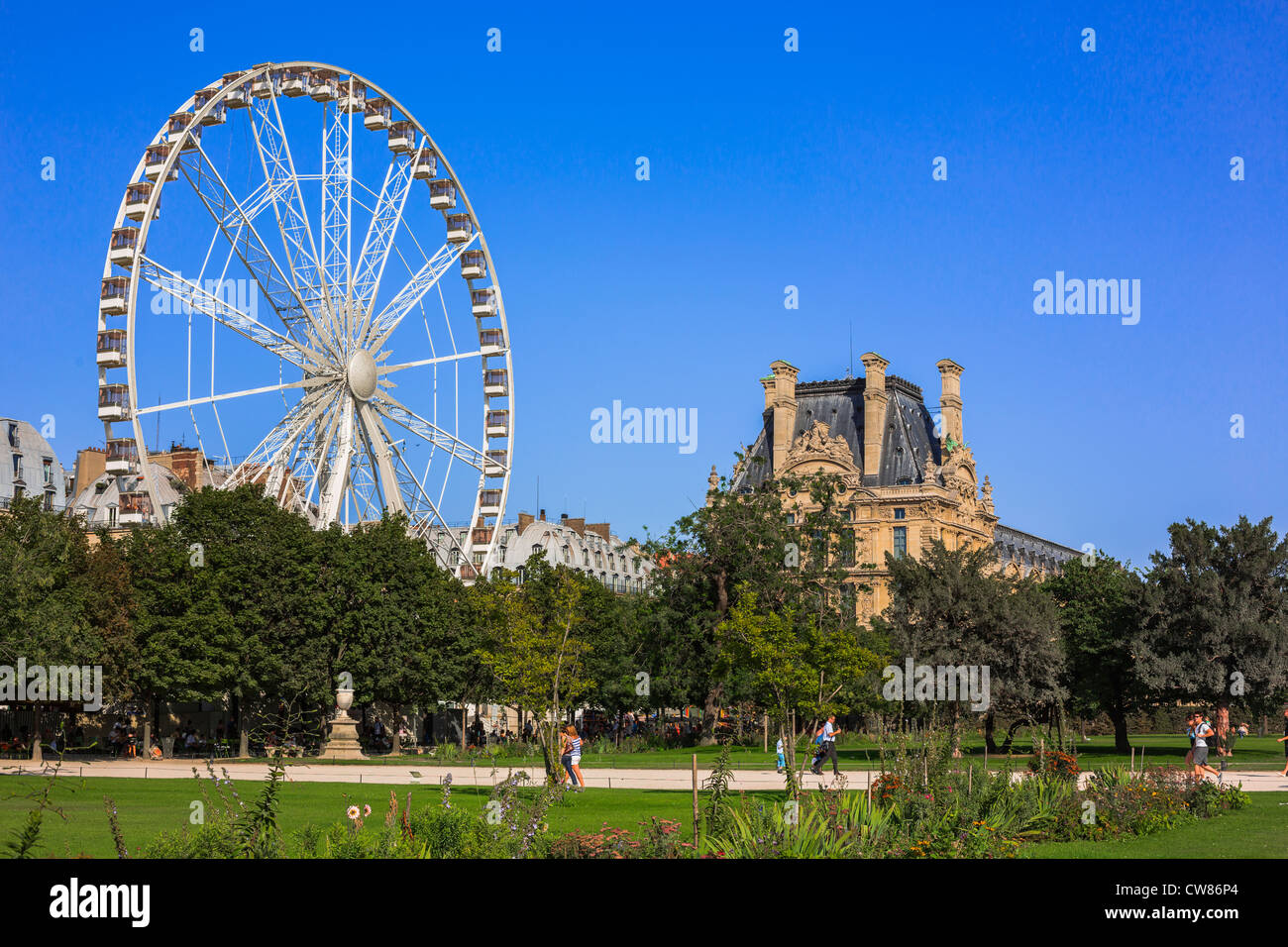The Big Wheel in the Tuileries garden and the Louvre Museum Paris, Ile de France, France, Europe, EU

Image details
Contributor:
Thibaut PETIT-BARA / Alamy Stock PhotoImage ID:
CW86P4File size:
63.3 MB (4.5 MB Compressed download)Releases:
Model - no | Property - noDo I need a release?Dimensions:
5759 x 3840 px | 48.8 x 32.5 cm | 19.2 x 12.8 inches | 300dpiDate taken:
18 August 2012Location:
Louvre Museum, Paris, Ile de France, France, Europe, EUMore information:
The Tuileries Garden (French: Jardin des Tuileries, IPA: [ʒaʁdɛ̃ de tɥilʁi]) is a public garden located between the Louvre Museum and the Place de la Concorde in the 1st arrondissement of Paris. Created by Catherine de Medicis as the garden of the Tuileries Palace in 1564, it was first opened to the public in 1667, and became a public park after the French Revolution. In the 19th and 20th century, it was the place where Parisians celebrated, met, promenaded, and relaxed. Garden statues and fountains. Located in between the Louvre and the Champs-Elysées, the garden owes its name to the tile factory that once stood on the site. At first it was an Italian-style garden, then it was entrusted to landscape architect Andre Le Nôtre who turned it into a huge and magnificent French-style garden. Palais des Tuileries, the royal residence for which these gardens were designed, was destroyed by the Communards and razed to the ground in 1880. Sit back by the grand octagonal pond, and enjoy the splendid garden views and open-air sculpture museum. Kids can still steer hired scale-model sailing boats around the pond, as in days long gone. The list of classical statues sprinkled around the garden includes Rodin’s Le Baiser, Eve, La Méditation and La Grande Ombre, and works by Coysevox and Carpeaux, and the list of contemporary works encompasses Max Ernst’s Microbe vu à travers un Tempérament, Alberto Giacometti’s Grande Femme II, Jean Dubuffet’ Le Bel Costumé and Henry Moore’s Reclining Figure. History trivia Louis XIV asked André Le Nôtre – who had designed the royal gardens in Versailles, Marly, Saint Cloud and Saint Germain – to redesign the Tuileries in 1664, for the “honest (as in ‘humble’) folk” to enjoy on Midsummer Day. It became Paris’ first public garden as a result.